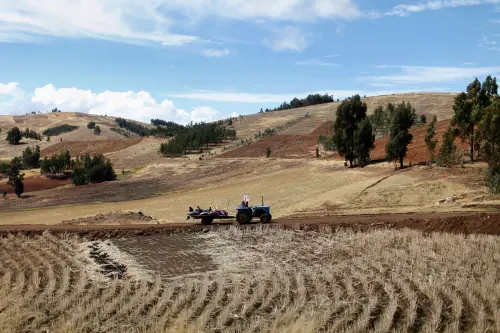Peruvian Agriculture Minister Angel Manero announced approximately $24 billion in predominantly public-private projects aimed at enhancing irrigation in the country, with the goal of expanding farmland by about one million hectares (3,860 square miles). This expansion would exceed the size of Puerto Rico.
During a press conference, Manero indicated that these funds would be allocated over the next three to seven years to kickstart around 22 new or delayed projects across Peru's coast, highlands, and Amazon, with contracts expected to be awarded between 2025 and mid-2026.
The key initiative will be the "Trasvase Maranon," valued at approximately $7 billion. This project will transport water from the Maranon River to the Pacific coast, irrigating over 300,000 hectares. Additional projects mentioned include the $3.5 billion Chinecas project on the northern coast and the Pampas Verdes project in the south, anticipated to cost around $4 billion.
Economy Minister Jose Salardi, who also spoke at the press conference, noted that over 85% of the projects would be executed through public-private partnerships.
Peru's agricultural exports, mainly consisting of fruits like blueberries, surged over 20% last year, reaching approximately $12.8 billion, bolstered by anticipated shipments of beef and pork to China.
In light of recent U.S. tariff announcements, Peru's central bank highlighted that the impact on the nation would be minimal, as Peruvian fruit exports complement supplies unavailable in North America during certain seasons.
By 2050, the government aspires for agricultural exports to surpass mining as the country's primary economic driver. Presently, Peru ranks as the world's third-largest copper supplier.
Earlier this year, Manero proposed large-scale irrigation projects along the coast, aiming to add 250,000 hectares of new farmland this year, with plans to establish an additional 500,000 hectares by June 2026.
